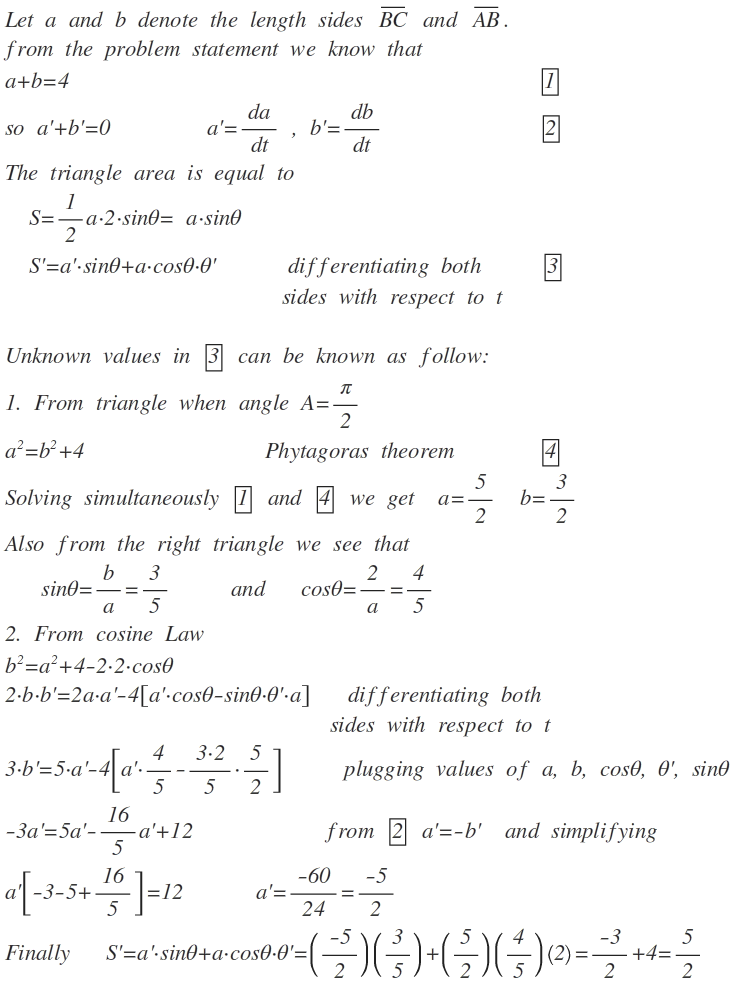Rate of change of the area of a triangle
In triangle and Let and suppose that the rate of change of the angle with respect to time is
Then, if is the area of the triangle, what is the rate of change of with respect to time when
This section requires Javascript.
You are seeing this because something didn't load right. We suggest you, (a) try
refreshing the page, (b) enabling javascript if it is disabled on your browser and,
finally, (c)
loading the
non-javascript version of this page
. We're sorry about the hassle.

Let ∣ B C ∣ = x . Then ∣ A C ∣ = 2 ∗ ∣ A B ∣ − x = 4 − x . Thus, using Heron's formula , we see that
S = 3 ( 3 − 2 ) ( 3 − x ) ( 3 − ( 4 − x ) ) =
3 ( 3 − x ) ( x − 1 ) = 3 − x 2 + 4 x − 3 , (i).
Now we also have that S = 2 1 ∣ A B ∣ ∣ B C ∣ sin ( θ ) = x sin ( θ ) , and so
sin ( θ ) = x S = x 3 − x 2 + 4 x − 3 .
Differentiating both sides with respect to t gives us that
cos ( θ ) d t d θ = x 2 − x 2 + 4 x − 3 3 ( 3 − 2 x ) d t d x ,
and since d t d θ = 2 rad\sec we find that
d t d x = 3 ( 3 − 2 x ) 2 x 2 cos ( θ ) − x 2 + 4 x − 3 .
Differentiating equation (i) with respect to t using the chain rule, we have that
d t d S = d x d S ∗ d t d x = − x 2 + 4 x − 3 3 ( 2 − x ) ∗ 3 ( 3 − 2 x ) 2 x 2 cos ( θ ) − x 2 + 4 x − 3 =
3 − 2 x 2 x 2 ( 2 − x ) cos ( θ ) , (ii).
Now when ∠ A = 2 π we have that, by Pythagoras,
∣ B C ∣ 2 = ∣ A B ∣ 2 + ∣ C A ∣ 2 ⟹ x 2 = 4 + ( 4 − x ) 2 ⟹ 8 x = 2 0 ⟹ x = 2 5 .
This then gives us that cos ( θ ) = ∣ B C ∣ ∣ A B ∣ = 5 4 .
Plugging these values into equation (ii) gives us that, when ∠ A = 2 π ,
d t d S = 3 − 5 2 ∗ 4 2 5 ∗ ( − 2 1 ) ∗ 5 4 = 2 5 = 2 . 5 units/sec.